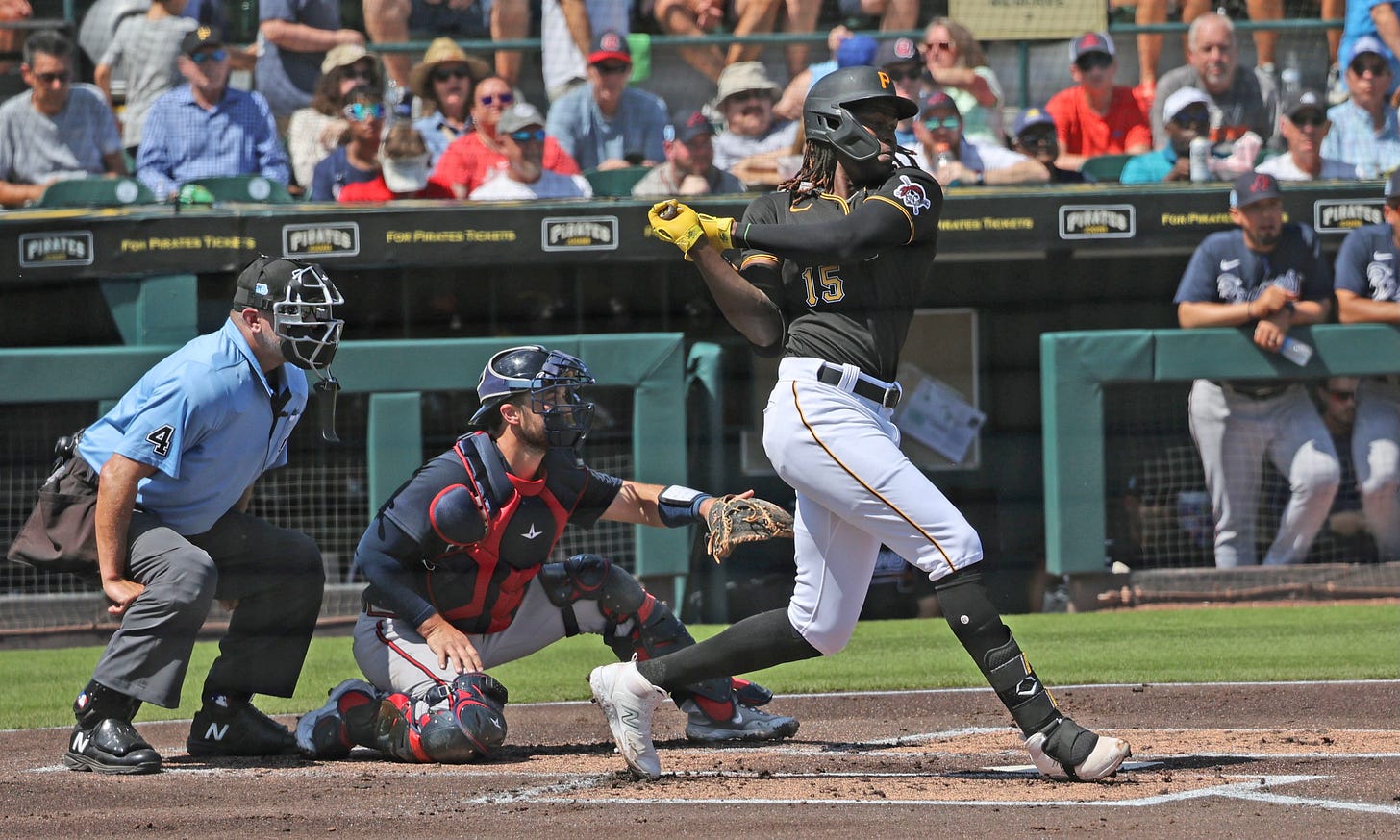The Game of "IF"
Optimism wanes when you are unsure of what the foundation begins with
I think what has become one of the more aggravating points of contention during the off-season is the continuous debates of “IF this happens.” Nothing is assured when it comes to the construction of a roster, but you’d like if a roster was built around a sense of reliability, with the “IF” questions filling out the remaining holes.
2016 is a perfect example of it all falling apart. Going into it, one would’ve felt comfortable in saying the Pittsburgh Pirates could rely on Andrew McCutchen who was coming off his fifth consecutive season of 5.4 fWAR or better, Gerrit Cole fresh off a top-5 Cy Young season, or Francisco Liriano establishing himself as a dependable middle-rotation starter.
Gregory Polanco was coming off a successful first full season, Jung-Ho Kang had established himself as a quality power hitting third baseman, and Starling Marte a home run short of a 20/30 season.
The biggest argument back then, that I remember, was who should play center field? Not that the Pirates needed a center fielder, but that they had three quality outfielders and who should be the one to man the position? There was the Neil Walker for Jonathan Niese trade, that I was personally fine with.
I thought they should’ve gotten more, but they acquired a pitcher coming off a tough year who had put up five straight ~2.0 fWAR seasons prior to 2015. Plus, it was a time when we trusted the Pirates’ Front Office, and pitching development knew what they were doing. All that aside, they also had a flourishing farm system with a glut of top-tier prospects – specifically pitching prospects – ready to crack the lineup mid-season.
What largely followed was McCutchen’s defense cratered in center field (across all defensive metrics) along with his offense (although still slightly above average). Cole had what has been the only injury-riddled season of his career thus far. Then Liriano absolutely bottomed out. Those three players alone accounted for 14.4 fWAR in the Pirates’ 98-win season in 2015, and trip to the playoffs. In 2016, they combined for 3.4 fWAR.
So, why do I bring up this painful — or the last happy — memory? We’re almost ten years removed from the 2015 season, going into the “new” regime’s fifth season, and the Pirates’ success is entirely predicated on “IF.”
This isn’t meant to be “Here is a list of players I think are terrible and why!” It’s a matter of we just don’t know. I have high aspirations for the young players and rebound projects, but there’s no way to know.
“IF” Ke’Bryan Hayes second half surge is to be trusted. We know the glove is there, but if he adds even average to above average consistent offense? That’s a huge boost.
“IF” Jack Suwinski could limit the valleys and droughts during the season, the Pirates would have a very very special player on their hands. “IF” 2023 is the player he is, that’s a very good player, but there’s still the possibility his whiff rates lead to lower production. Pair that with we’ll have to see if he can improve upon his defense in center field, or if he’s just going to remain the “best of what they have.”
“IF” Oneil Cruz will show the improvement we had hoped to see in 2023, let alone if there’s any rust. Will he explode into one of the game’s biggest offensive threats? Will his defense see improved control of his throws? At this point, from what we know, he’s similar to Suwinski in center field, just as the “best of what they have” at shortstop.
“IF” Bryan Reynolds can better emulate his 2021 season. Maybe not the full 6.0 fWAR, although that would be a very welcome addition, but closer to his 2022 season of 124 wRC+ and push past his 2.8 fWAR that year. Alex Stumpf recently wrote about some of Reynolds numbers and how he had one of his worst season’s against the fastball in 2023.
The reality is that we could keep going. “IF” Davis asserts himself as an everyday catcher. “IF” someone steps up for 2B. “IF” Olivares can boost himself into an above-average, all-around starting right fielder.
At this point in the off-season, the only part of the team I feel comfortable about is the bullpen. I think it has the potential to be solid. But you also need to be able to get to that bullpen with a lead in hand, or at the least, the game within reach with an offense you have faith can come back.
I don’t even want to get started on the rotation. It’s Mitch Keller and “IF.” We could drum up all the possible scenarios we’d like and paint those ideas with rainbows, but there’s absolutely no way of having any idea as to what may or may not happen. Just as with Johan Oviedo, no one (outside of the organization) could’ve predicted he’d be lost before anything got going.
Just as no one could’ve predicted the Pirates would lose one starter (JT Brubaker) and one of their presumed top depth starters (Mike Burrows) at the onset of 2023 season. The one caveat there is that you would hope the organization would have a backup plan, which has always been my gripe going back to that aforementioned 2016 season.
Will Keller pitch at a high-end pace the entire season and possibly skip over his 2023 mid-season road bump? Which version of Martin Perez or Marco Gonzales are they going to get? Will they stay healthy? Presuming no more additions (although we keep hearing they’re “looking”), which young prospects will click? Quinn Priester, Roansy Contreras, or Luis Ortiz? Could it be Jared Jones? Paul Skenes forcing himself up sooner than later?
The best-run organizations have backup plans, and so far, it’s hard to say the Pirates plan A itself isn’t more than just wishful thinking.




Big respect for your writing, Nola.
My view of what is now clearly a case of organizational arrested development is their discomfort in the reality of "IFs".
No club that plays in our end of the pool doesn't have "Ifs". The Rays succeed not by fielding a stable roster of homegrown talent that settles into 9 positions and 5 rotation slots for some ambiguous period of time. They constantly churn talent and give up on absolutely zero roster slots on their way to squeezing out wins any way possible. Errybody wanna be the Rays, nobody wanna act like the Rays.
The fact that the Pirates have now gone a decade without seriously sniffing at contention is a product of their unwillingness to just *try* putting an actual winning team on the field. A constant look toward the perfect plan five years away robs us of not only winning clubs but the bare minimum of watchable, competitive baseball teams.
The narrative around "inequality" in baseball belies the reality that every single organization can fund a payroll that can build a roster that's within a few percentage points of even the highest spenders. That extra hundred million bucks the big boys spend buys them literally a couple percentage points in fewer "Ifs". Of course this matters, and is a big part of why spending does in fact correlate with winning, but the enormous advantage that these clubs get in reality is due to clubs like the Pirates refusing to even try.
30 clubs actually fucking trying is not only a better product but far more "equal" than one in which a third of the league at any given time decide to stop trying in an effort to craft the perfect club five years away.
Embrace the Ifs, just fucking try.
The Pirates plan seems to be to draw to an inside straight. All the IFs need to come together perfectly.